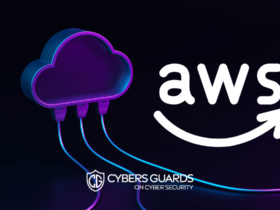What is Remote Access Software?- Whether we agree with it or not, technology has become an integral element of modern schooling. The technology improvements of recent years have all led to enhanced efficiency in how learning is conducted in a regular classroom setting.
Computers, tablets, and cellphones have greatly simplified the lives of students and teachers. They may prepare lesson plans, present reports, and organise classroom discussions with the best free remote access software.
Aside from the features listed above, there are many other benefits that contemporary technology may bring to education. We should start investing in remote access software if we want to get the most out of our PCs, tablets, and smartphones.
If you’re wondering “what is remote access software?” right now, you’ve come to the correct place. The purpose of today’s essay is to explain what remote access software is and why it is crucial in current education.
Definition of Remote Desktop Access Software
Remote access software is a programme that allows you to access a computer from another location. Simply said, it allows users to access a gadget remotely from another device as if they were in front of it. Users can execute a variety of operations on the distant device using the internet and VPN Access connection, including app administration and troubleshooting overhaul.
For example, suppose you’re giving a report in front of the class and you need to quickly access a critical file on your home computer. If both devices use the same remote access software and someone at home has access to your Remote PC, you should be able to acquire the file you require for your presentation.
Benefits of Remote Desktop Software
One of the most popular solutions provided by remote access software is the example above. There are still many uses for remote access, particularly in education. Let’s take a closer look at how remote access software affects modern education.
The enhanced connection between students and professors is one of the most evident benefits of remote access software in education. Teachers can control the lesson from anywhere in the classroom using remote access software.
If the teacher wants to display his or her talk in front of the class, he or she can simply link the desktop to one of his or her devices using remote access software. This offers him or her complete freedom to move around the classroom while maintaining control of the desktop where the lesson is being delivered.
The teacher can also utilise remote access software to distribute the lesson’s information from his or her device to the computers or iPads of his or her students. It not only allows them to view the lesson on their device, but it also allows them to direct the lesson and contribute to the discussion. This gives them the opportunity to get more involved in the classroom.
Screen-sharing technology is another advantage that remote access software can bring. Teachers can share their displays with the rest of the class using this technology. Students will be able to observe the lessons in front of the teacher’s screen, increasing their level of interaction in the classroom.
For reporting purposes, students can do the same thing. Instead of utilising a projector, they can simply share their screens with the rest of the class’s devices, allowing for a steady stream of engagement between the presenter and the audience.
The school can reduce the requirement for expensive interactive whiteboards or IWBs by leveraging screen sharing with current PCs and devices. This will enable the school to save a significant amount of money and avoid incurring additional costs. It also makes it easier for students with limited eyesight to see the debate. They may easily observe the lesson in front of them, providing them with a full-color image view of the screen, rather than staring at the projector or whiteboard from afar.
Conclusion
Remote Access has grown more relevant to education than at any previous time since the introduction of computers, laptops, and mobile devices to educational institutions. Now that we’ve seen remote access employed in education, it’s time for you to take advantage of it for your own educational purposes.











Leave a Reply